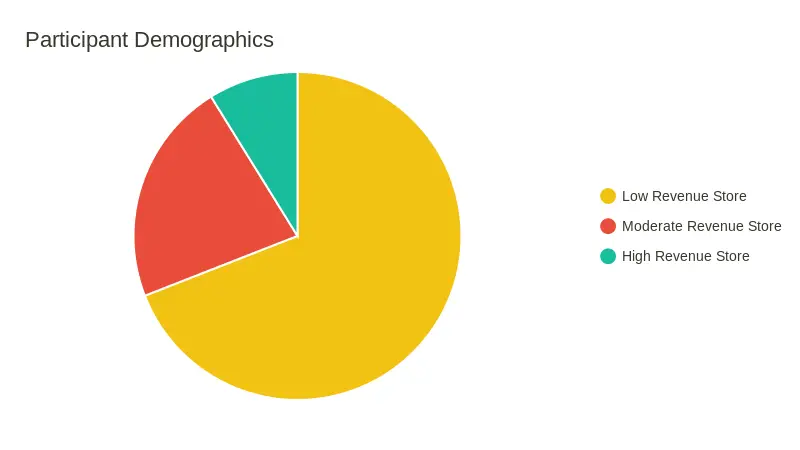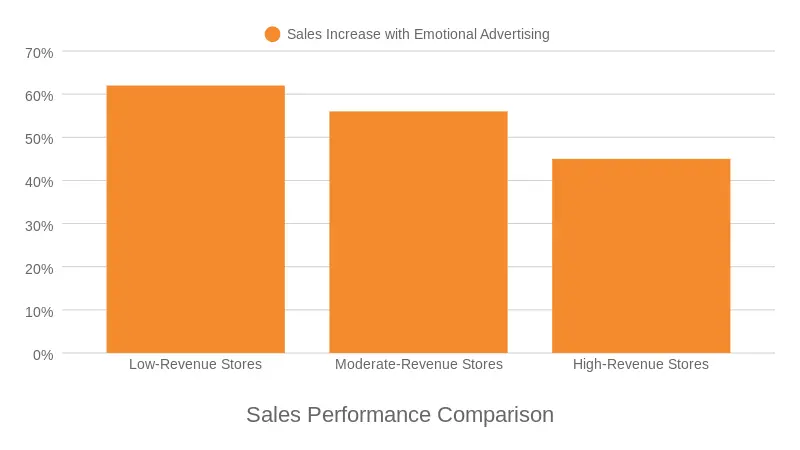The term itself and its similar variation Emotional Branding has been around for ages, with the actual strategy dating back to ancient times.
It only recently caught the attention of the modern crowd after Marc Gobé talked about it in his book “Emotional Branding: The New Paradigm for Connecting Brands to People”, which he published in 2001.
In this post, I’ve gathered all the recent stats about this strategy. I’ll walk you through a close look at all the important statistics and even add some case studies in the end to show the effectiveness of Emotional Marketing.
We also did a study ourselves so make sure u read the entire post to find it!
Below are some of the statistics I find the most important. You can keep reading to learn more about them in detail, including my analysis of them and their source.
- Emotional marketing campaigns succeed 31% of the time.
- Emotionally-triggered ads can lead to a 23% sales spike.
- Emotional brand connections result in a 306% higher customer lifetime value.
- 95% of buying decisions are influenced by emotions.
- Emotionally engaged customers are willing to spend twice as much, with an 81% higher likelihood.
Emotional Marketing: Detailed Stats
Now, let’s get in deep and talk about what the numbers are, as well as what they mean.
Emotional Marketing Success Rates
Ads that predominantly feature purely emotional content outperform those with a solely rational approach, boasting a remarkable 31% success rate compared to a more modest 16%, reinforcing the potency of emotional resonance in marketing. (Source: NeuroScienceMarketing, IPA Effectiveness Awards Case Studies)
Ads that trigger above-average emotional responses can cause around 23% of sales spikes. In other words, emotions can be a catalyst for immediate buying decisions. (Source: Nielsen)
Global Emotional Marketing Trends And Demographics
Across the globe, Italians emerge as the frontrunners in forging emotional connections with brands, leading the pack. Meanwhile, Brazil, the United States, and Spain follow closely behind, emphasizing the universal appeal of emotional marketing strategies. (Source: Capgemini)
Younger people seem to connect more emotionally with brands than older generations, with a 58% emotional attachment rate. This highlights the need to tailor marketing for different age groups. (Source: Capgemini)
Impact on Consumer Behavior
A staggering 95% of purchasing decisions are influenced by subconscious factors, highlighting the subtle yet profound impact of emotions on consumer choices. (Source: Inc)
It’s important to note that the same advertisement can yield varying responses across different demographics, emphasizing the need for tailored marketing strategies to effectively reach diverse consumer groups. (Source: Frontiers)
When viewers are emotionally stirred by an advertisement, the resulting 70% likelihood of purchase underscores the critical link between emotional engagement and conversion rates. (Source: Unruly ShareRank)
Negative headlines get about 30% more clicks than positive ones. That’s because people are naturally curious and emotionally drawn to content that triggers a reaction, even if it’s a negative one. (Source: Poynter, Outbrain)
Content that makes people angry has a 38% chance of going viral. Strong emotional reactions, whether positive or negative, tend to spread widely online. (Source: Moz)
Brand Loyalty and Customer Relationships
A striking 82% of consumers exhibit brand loyalty when making purchasing decisions, underscoring the enduring value of building strong brand connections. (Souce: Netimperative)
The fact that 71% of consumers prefer businesses they have an emotional connection with, and this connection can boost their long-term value to the business by a significant 306%, underscores how trust and emotional bonds play a vital role in building lasting customer relationships. (Source: Statista)
81% of emotionally engaged consumers are willing to spend up to twice as much on brands. In simple terms, people are ready to open their wallets when they feel a connection. (Source: Capgemini)
Notably, 60% of loyal customers make more frequent purchases. (Source: InMoment).
Keeping current customers happy can be a highly profitable strategy. It can lead to a small 5% increase in customer retention which in turn leads to significant profit boosts, ranging from 25% to 95%. (Source: Harvard Business Review).
When it comes to loyalty programs, 52% of American customers readily sign up with their preferred companies. This shows that loyalty programs can be a valuable tool in building emotional connections and providing customers with reasons to stay. (Source: Yotpo).
Surprisingly, 28% of unhappy customers are willing to stay with a company. It hints at the power of emotional ties; customers might stick around even when the product falls short. (Source: Harvard Business Review).
A significant 52% of customers actively seek opportunities to do business with brands they’re loyal to. This indicates that loyal customers don’t just wait for offers but actively engage, presenting opportunities for businesses to nurture these relationships further. (Source: Zendesk).
About 20% of contented customers consider switching to other businesses. This suggests that even satisfied customers can be flighty. Businesses need to maintain connections to prevent losing them. (Source: Harvard Business Review).
An astonishing 77% of customers maintain their loyalty to a preferred brand for a decade or more. This reveals the stability of emotional connections in retaining customers over the long haul. (Source: InMoment).
Customer Referrals and Recommendations
People who emotionally connect with a brand recommend it at a rate of 71%, compared to the average rate of 45%. This showcases the power of emotions in driving word-of-mouth referrals. It’s a reminder that creating emotional resonance can amplify positive customer advocacy. (Source: Motista).
An impressive 77% of individuals are willing to recommend a business to a friend after a positive experience. This underscores the importance of delivering excellent customer experiences to drive organic growth through referrals. (Source: Ternkin Group).
Financial Impact of Emotional Connections
Customers emotionally attached to a brand exhibit a remarkable 306% higher lifetime value, highlighting the tangible impact of investing in emotional bonds on a company’s bottom line. (Source: Motista).
On average, emotionally attached customers spend $699 annually with a company, compared to $275 from other satisfied customers. The difference in spending highlights the financial benefits of fostering emotional connections with customers. (Source: Motista).
B2B Emotional Influence
With B2B purchases, it becomes evident that emotions wield significant influence, and in certain scenarios, they hold greater sway than pure logic and reason. (Source: Neil Patel)
Our Research Study on Emotional Marketing
We conducted a study where we asked 362 online store owners (dropshippers mainly) from various places discord communities, online forums, and Facebook groups to invoke an emotion in their marketing creatives.
We saw a 62% increase in sales when marketing creatives successfully invoked an emotion. This study shows how powerful it is to invoke emotions in your marketing creatives.
Things To Know:
- Participants: A total of 362 online store owners participated in the study, predominantly from lower revenue brackets. A smaller portion represented moderate revenue levels, while high revenue participants were significantly less in number.
- Data Collection: Data was collected through online surveys, interviews, and analysis of sales data provided by participants. (Found from various discord communities, online forums, and Facebook groups.)
Results: The data collected and analyzed in this study yielded several key findings:
Table 1: Participant Demographics

| Demographic | Number of Participants |
|---|---|
| Total Participants | 362 |
| Revenue Levels | |
| – Low Revenue Store | 250 |
| – Moderate Revenue Store | 80 |
| – High Revenue Store | 32 |
Table 3: Sales Performance Comparison

| Revenue Group | Sales Increase with Emotional Advertising |
|---|---|
| Low-Revenue Stores | 62% |
| Moderate-Revenue Stores | 56% |
| High-Revenue Stores | 45% |
As you can see, the ones who benefitted the most were low revenue stores. It could have been many reasons but, one I suspect would be that they often have smaller customer bases and limited resources for marketing. This could produce greater results from any given action since they are smaller in scale.
In contrast, high revenue stores might already have established customer loyalty and a larger marketing budget, so the impact of emotional advertising, while still positive, may not be as dramatic in terms of percentage increase.
Case Study And Sales Numbers From Emotional Marketing
Here are some campaigns that have successfully leveraged emotional marketing to drive sales:
Coca-Cola’s “Share a Coke” Campaign

Coca-Cola has long been a master of emotional marketing, and one standout example is the “Share a Coke” campaign that began in Australia in 2011 and soon took the world by storm.
It encouraged people to share a Coke with loved ones and saw a 7% surge in teenage consumption, with two out of five Australians opting for a “Share a Coke” pack. They even printed 378,000 personalized Coke cans at kiosks, leading to a 3% boost in overall sales.
On social media, 76,000 virtual Coke cans were shared, Facebook traffic shot up by 870%, and fans generated 170,000 tweets.
The campaign also expanded the Coke Facebook page in Australia by 39%, showcasing how Coca-Cola effectively used social media for consumer engagement.
(Source: Wrike, Coca Cola, MarketingMag)
Budweiser’s “Reunited with Buds” Campaign
Budweiser’s 2020 “Reunited with Buds” campaign marked the end of the pandemic, highlighting the happiness of reunions. This ad scored an impressive 734 on the Ace Score, ranking as the second-highest-rated beer ad of the year.
In a Super Bowl ad poll, 29% of participants chose Budweiser as their top pick, with a nod to its “Reunited with Buds.” and “Puppy Love” ads.
The campaign also boosted Budweiser’s sales by 2.7% and garnered over 50 million social media views.
(Source: Ace Metrix, Morning Consult Pro, Nucleus Vision)
Burger King’s “Whopper Detour” Campaign
In 2018, Burger King rolled out the “Whopper Detour” campaign, a brilliant marketing move aimed at enticing customers to download their app.
The deal was simple: if you found yourself within 600 feet of a McDonald’s restaurant, you could snag a Whopper for just one cent.
This ingenious campaign not only generated a buzz but also delivered remarkable results. With a staggering 37:1 return on investment, it left everyone in awe.
What’s even more impressive is that post-campaign, mobile sales remained a robust 200% of their pre-campaign levels.
As a testament to its success, the BK app saw a whopping 1.5 million downloads, marking a staggering 37.5% increase in just nine days.
(Source: CBC, mParticle, Marketing Dive)
McDonald’s “Our Food, Your Questions” Campaign:
In 2012, McDonald’s Canada launched the “Our Food, Your Questions” campaign. Its goal? To dispel myths about their food.
And it worked wonders. Monthly store visits shot up by 50%, improving the brand’s image. Surprisingly, in just six months, the campaign surpassed its one-year question target by a massive 400%.
Online, it racked up 10 million interactions, with each visit lasting over four minutes – an 18% jump from the category average.
The campaign’s success was so remarkable that in 2013, McDonald’s Canada earned the prestigious title of “Marketer of the Year.”
(Souce: McDonalds Canada, Campaign)
Amazon Prime Video’s “The Man in the High Castle” Campaign

In 2015, Amazon Prime Video launched “The Man in the High Castle” campaign with billboards transforming Nazi symbols into American flags.
Despite its controversy, the campaign generated significant social media buzz. The first season quickly became Amazon Prime’s biggest hit, drawing eight million U.S. viewers and 1.15 million new global Prime subscribers.
To this day, “The Man in the High Castle” remains one of Amazon’s top-streamed original series, with strong demand in the Drama genre, ranking at the 97.6th percentile among all shows in this category.
(Source: Variety, Parrot Analytics)
Other Interesting Facts About Emotional Marketing
Memory and Emotions: People tend to remember emotionally charged ads better than those that evoke no emotion, making emotional marketing campaigns more memorable.
Storytelling Matters: Emotional marketing often relies on compelling storytelling to connect with audiences on a deeper level, fostering brand loyalty.
Cultural Sensitivity: Successful emotional marketing considers cultural nuances to ensure emotions resonate positively across diverse audiences.
Music Elicits Emotions: The strategic use of music in marketing can evoke emotions, with specific tunes associated with happiness, nostalgia, or excitement amplifying the emotional impact of ads.
The Fear of Missing Out (FOMO): FOMO is an emotional trigger frequently used in marketing, emphasizing the emotional discomfort people feel when they think they’re missing out on something important.
Final Thoughts
These statistics underscore the undeniable impact of emotional marketing on consumer behavior and brand success.
I hope you’ve found these insights valuable in your marketing endeavors. Remember, emotions are a potent tool in your marketing toolkit, capable of driving loyalty, conversions, and long-term success.
Thank you for reading, and best of luck in your marketing endeavors!
Related
- Welcome Email Statistics (Up To Date) Facts & Figures
- Temu Statistics (Up To Date) Facts & Figures
- Shopify Statistics (Up To Date) Facts & Figures
- Dropshipping Statistics (Up To Date) Facts & Figures
- Aliexpress Statistics (Up To Date) Facts & Figures
- Drop Servicing Statistics (Up To Date) Facts & Figures
- Ecwid Statistics (Up To Date) Facts & Figures
- Redbubble Statistics (Up To Date) Facts & Figures